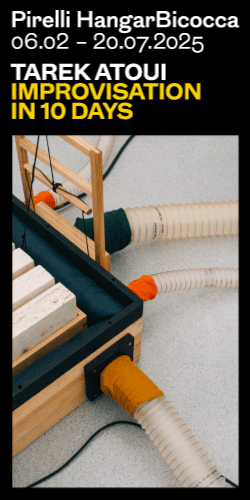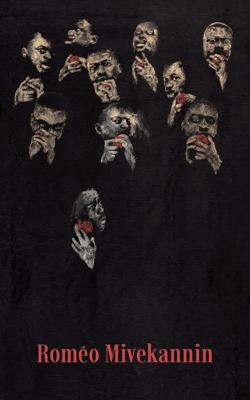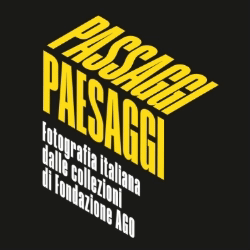[nemus_slider id=”51532″]
–
On November 14 North Wales contemporary art gallery MOSTYN inaugurated WAR II, a group show curated by Adam Carr, with artworks by Pierino Algieri, Ulla von Brandenburg, Vanessa Billy, Peter Coffin, Thomas Demand, Mario Garcia Torres, Félix González-Torres, Claire Fontaine, Simon Dybbroe Møller, Diango Hernández, Jon Kessler, Catrin Menai, Lydia Ourahmane, Christodoulos Panayiotou, Wilfredo Prieto, Mandla Reuter, Ron Terada, Sung Tieu, Gwyn Williams & Josh Whitaker.
WAR II is a follow up to 2014 show WAR I, and is part of a sequence of shows titled History Series, a series which focuses on the use of MOSTYN building during WWII. In fact, along with the artworks, the exhibition features also over 100 artefacts, images and memorabilia telling the story of Llandudno and the surrounding area during that period of time.
We asked some questions to Adam Carr.
ATP: The show is a sequel to WAR, which you curated last year, and is the sixth exhibition to explore the history of the MOSTYN building. Could you give us a brief introduction about MOSTYN’s past?
Adam Carr: MOSTYN | Wales opened in 1901 and was commissioned by Lady Augusta Mostyn as a gallery for female artists to present their work, one of the first picture galleries in the world built for that purpose. The use of the building has had many changes throughout the years. In the 1970s it was reinstated as an art gallery after some time of being a musical instrument dealership, whose owners relocated to Llandudno from Manchester after their store was demolished during the war. 2010 marked the year that MOSTYN reopened after a large extension with additional gallery spaces. The show WAR II is a follow up to WAR in that it continues the theme of war and the building’s relationship to it. During WW1 the building was used as a drill hall and in WW2 as the Donut Dugout for American Troops, which became starting points for both of the exhibitions. As part of the History Series of exhibitions, WAR II introduced much more detailed historical research than previous shows in the series would allow, particularly in connection with the local area, with great input from my colleagues Jane Matthews and Richard Cynan Jones who have made a number of valuable connections. Additional financial support has allowed the project to expand and develop in different ways, making a more sustained connection with our audiences.
ATP: How did you manage to link contemporary art and MOSTYN’s history?
AC: When I joined MOSTYN in 2013 I was already familiar with the institution after visiting as a child with my mother and father, and was often curious about the building, its architecture and past, and in later years I began to be interested in the status of such an institution in a seaside town like Llandudno. After learning more about MOSTYN’s rich history and heritage when coming into position after living and working in London, and having a desire to make a stronger and perhaps more meaningful connection with the local audience, its history seemed urgent to address through the exhibition programme. It was clear to me that the inception of MOSTYN and all of the interesting changes and past uses were ready-made ingredients for the formation of a series of exhibitions. A sequence would not only allow for a fuller investigation of MOSTYN’s past, but would also provide the Visual Arts Programme with a sense of consistency and development – a commitment for MOSTYN to be informative about itself over time, and raise its history and profile further across shores. The idea of presenting historical objects and images with contemporary artworks arose from an awareness about the locale of MOSTYN, and the difference of presenting exhibitions there to say another place, such as London, Paris, or Milan, or any other city I have worked where there is a large and dedicated art following. For those not familiar with contemporary art, the exploration of historical subjects tied to the building and the locale could lead the public to investigate and think about contemporary artwork anew, or perhaps for the first time. Conversely, the attraction of works by contemporary artists could lead people to consider MOSTYN and its history, as well as history in general. There is a contemporaneity in both elements, however, even if one is from or seems to belong to a distant past.
ATP: The show presents artworks along with a selection of historical images and memorabilia. Which criteria did you follow to choose both these objects and the artworks?
AC: All of the exhibitions, including WAR II, present documents, artefacts and images related to specific moments of MOSTYN’s past use, with works by contemporary artists that are linked in various ways. The first of the series, ‘Women’s Art Society’, looked at the inauguration of the building and together with the historical component works by over 15 international artists were presented, including Ai Weiwei, Martha Rosler, Jens Haaning, Danh Vo, Andrea Fraser, Catherine Opie and Sol Calero, among others. The artworks explored issues such as gender and exclusion – aspects which were crucial to the building of MOSTYN as the home of the female group the ‘Gwynedd Ladies’ Art Society’, as the members were often excluded as individuals from other art societies on the basis of gender. The second show in the series, We’ve Got Mail, the first in a four part exhibition happening between 2013-2017, looked at the context in which it took place, Gallery 1, a former Royal Mail sorting office and it brought together a history of mail art and the history of the postal service with related subjects. ‘WAR’ presented works by contemporary artists looking at ideas of conflict, the effects and aftermath of war, and also conflict within the institution of art: conflict with the tradition of exhibiting, conflict with viewing, etc, and the history component primarily looked at stories in and around the local area during WW1. ‘We’ve Got Mail II’ examined the history of the postcard in the context of Llandudno including how this related to 5 local families in the seaside business, alongside a selection of classic examples of the use of postcards in the visual arts. ‘Women’s Art Society II’ took place earlier this year, for which I invited 9 contemporary female painters to present new and recent works, and the historical section in collaboration with Jane Matthews and Richard Cynan Jones looked at the before and after scenario of the Gwynedd Ladies’ Art Society at MOSTYN. The current show takes as its point of departure the use of MOSTYN’s building during WW2 as the ‘Donut Dugout’– a space for food and recreation for American troops located in the town. The presentation places the historical objects and images into closer contact with works by contemporary artists than the shows in the series have done previously, and I was interested to see what would happen when they are not only more physically linked, but also conceptually too. The selection of artworks deliberately eschews a grouping of works exclusively tied to WW2, or even to ideas of war and conflict. Each wall in the show has a different focus broken down into subsections and these became the starting points behind the selection of the contemporary artworks. For instance, Jane Matthews and Richard Cynan Jones’ research about the Ministry of Food, which was relocated from London to nearby Colwyn Bay in WW2. This became the departure point for the selection of artworks by Simon Dybbroe Møller, Vanessa Billy and Diango Hernández which use or refer to food and deal with ideas of contemporary excess, the human condition, nationality and image making. In other cases, anecdotes and peripheral subject matter became the focus behind the contemporary presentation, as well as the idea of the series of shows overall in the way that it engages with history, memory and presentation. I think there is a real sense of individuality, authorship and purpose with this show, and that is always the aim considering the proliferation of group exhibitions worldwide.
ATP: The starting point for the show is the building, and the show takes place in that very same building. How did this influence the display?
AC: The aforementioned Donut Dugout, the starting point for ‘WAR I’I, was in the place where MOSTYN’s shop is currently located. Whereas the ‘We’ve Got Mail’ shows are presented actually in the gallery which they take as a departure point — a former Royal Mail sorting office — ‘WAR II’ is presented in the original Victorian galleries. The show includes images of the Donut Dugout at MOSTYN, which were found in the local archives service. The images have been blown up to create super graphics, the first things the visitor sees in the show. They act as a form of visual evidence and a backdrop for a display that centres on the history of the Donut Dugout and the history of the doughnut and related subject matter. The images have been applied to temporary constructions in the gallery space and have been built in such a way where the manner in which they were built and assembled is purposefully made visible, reflecting the makeshift and temporary nature of the Donut Dugout itself. The presentation overall shows clusters of objects, images and artworks, which was one way of putting different elements into a conversation, and this gives the feeling to the visitor that they need to return to explore the show further. The show is very dense and enough relevant material was found to probably make another show.
ATP: We’re experiencing a complex time. What does it mean for you to curate an exhibition about war in 2015?
AC: There have been a number of exhibitions staged worldwide about wars and associated themes throughout the years, so I was conscious of the need to avoid repetition. Although we have made a strong connection with Llandudno and the surrounding area, the show has many other facets that offer a strong sense of engagement. One could take from it thoughts about the artists and their artworks of course, or the curatorial vision that they are part of. The show is as much about WW2 and war as it is about seeing and considering exhibitions, contemporary art and history in perhaps a different way and anew. The show has a strong educational element to it, and is socially and politically minded. It is also tremendously personal with a universal outlook. We are experiencing a complex time and I think that the challenge in terms of organising exhibitions is to try and find a way to present it with real purpose, tapping into the unique ability of exhibitions to offer reflection that no other form of presentation can do. A recent debate surrounding the so-called ‘use’ function of art infers that a static, traditional display of works of art is surplus to societies needs. I do not agree with that. I think the power of art and its display, including works of social practice, is still immeasurable.
Until May 8, 2016













